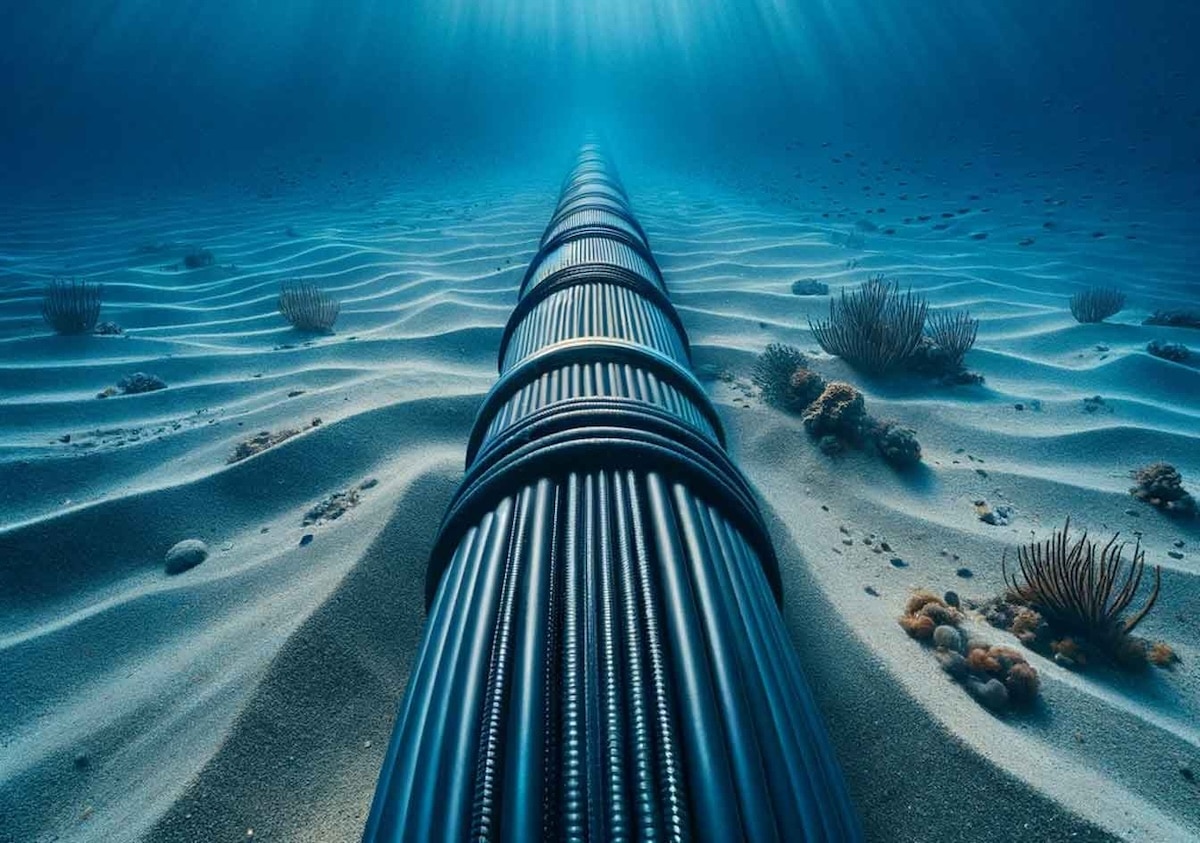Cable wars: what to do about deepening conflict beneath the
Undersea Cable Conflicts Escalate Globally

Recent incidents involving undersea cables have raised alarms about the increasing frequency of disruptions caused by maritime activities. A Russian oil tanker damaged vital internet infrastructure in the Baltic Sea just before Christmas 2024, while a Chinese bulk carrier caused similar damage a month earlier. This pattern of “accidental” disruptions has been observed globally, prompting concerns about the geopolitical implications of these incidents.
Rising Tensions in Undersea Warfare
The escalation of undersea cable conflicts can be attributed to several factors, primarily driven by the Information Revolution. As the internet becomes integral to daily life, the demand for undersea cables—over 400 major ones spanning a million miles—has surged. These cables, which carry 95% of global internet traffic, are primarily located in international waters, making them vulnerable to disruption. The economic significance of these cables has intensified competition among global powers, particularly the United States and China.
Accidents at sea, while not uncommon, have taken on a new dimension in recent years. Experts note that the frequency of disruptions has increased, particularly in strategic regions like the Baltic Sea and the Taiwan Strait. The geopolitical landscape has shifted, with nations like Russia and China using undersea cable disruptions as a form of hybrid warfare. For instance, the ongoing conflict in Ukraine has seen Russia targeting undersea infrastructure as a low-cost method of retaliation against Western support for Ukraine.
The situation is further complicated by the recent accession of Sweden and Finland to NATO, which has heightened Russian incentives to disrupt Baltic infrastructure. Similarly, tensions in the Middle East, particularly following the October 2023 Hamas attack on Israel, have led to increased threats against undersea cables in the Red Sea, a critical artery for global internet traffic.
Geopolitical Drivers of Cable Wars
The competition for undersea cable dominance is fueled by strategic interests. China’s rapid expansion of its cable network, particularly in the Pacific and developing nations, has raised concerns in the United States. In response, the U.S. has taken steps to counter Chinese influence, including blocking a Chinese trans-Pacific cable project in 2024 and promoting alternative routes that connect the U.S. to key allies in Asia.
Finnish Police Investigate Tanker as Reports Say Spy Equipment Was Found
The Taiwan Strait has emerged as a significant flashpoint, with Chinese vessels reportedly damaging subsea cables connecting Taiwan to its outlying islands. This pattern of disruption is part of a broader strategy to apply pressure on Taiwan without provoking a direct military response from the United States. Since 2017, there have been around thirty incidents involving undersea cables in this region, highlighting the ongoing tensions.
Looking ahead, the Indo-Pacific and Arctic regions are likely to see further escalation in cable conflicts. The strategic importance of these areas, combined with the vulnerabilities of less-developed infrastructure, makes them attractive targets for disruption. The U.S. government is beginning to recognize the national security implications of these conflicts, as evidenced by the proposed Undersea Cable Security and Protection Act, aimed at safeguarding critical telecommunications infrastructure.
As the geopolitical landscape continues to evolve, the potential for undersea cable conflicts to impact global communications and national security remains a pressing concern for policymakers worldwide.
